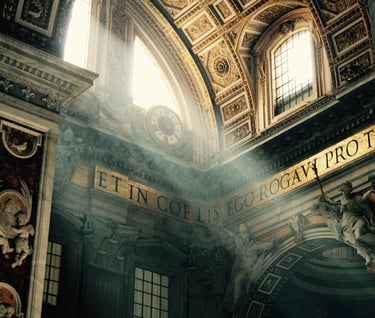
Finding peace in Rome
Although Rome is better known for its chaos than its calm, peace and quiet can be a reality if you know where to find it.
ARTICLES


Henry James was known as a caustic travel writer, as his essays in “Italian Hours” illustrate. A sometime resident of Rome, the author had a few choice words for describing the impact of tourists on his adopted city: “The city of the soul has become…a monstrous mixture of watering place and curiosity shop... its most ardent life is that of the tourists who haggle over false intaglio and yawn through palaces and temples”.
Well, according to James, once the springtime arrives, Rome is at the height of the foreign invasion and until the end of autumn Rome passes into “the hands of the barbarians”. And he goes on by saying; there is no respite during this time unless you find a few peaceful spots that seemingly elude the cranky traveller.
If James had hiking shoes or good sense, he would have made his way up to the Celio hill. It is the only fortified abbey in Rome and one of the most delicate places in the city. Augustinian nuns, a cloistered order, have cared for it since the 16th century, and the silent compound aptly reflects this contemplative life.
Ringing the bell inside the church gives you entry to the cloister, an entirely different world. Created in the 13th century by Roman stonecutters in honour of their martyred patrons, the space surprises those expecting something as austere as the preceding church and courtyard. In the tiny garden, large rose bushes hang heavy with blooms, even on the cusp of spring. Lofty palm trees provide shade, and when a breeze comes through the rustling leaves sound like distant, breaking ocean waves. The lovely disorder of the marbles under the loggia is as enchanting as the garden, with fragments of sarcophagi and pieces of columns leaning against the walls.
But there are other peaceful places such as the Aventine area, where Trajan allegedly made his home; this is largely residential. The quieter approach is by the pedestrian path up Clivio di Rocca Savelli, which leads directly to the Parco Savello, a garden built over a 12th-century fortress. It is not a grassy spot, gravel covers much of the ground, but its orange grove makes Parco Savello a green and tranquil space. There are also umbrella pines lining the paths with their upswept branches creating a graceful landscape.
Adjoining the park there is Saint Sabina, a church dating from the fifth century, adorned by the Baroque in earlier times, now fully restored to its original form. To name another little place, there is a patch between Viale Trastevere and Porta Portese which is an unlikely spot for a little peace and quiet, however, remarkably, a small oasis survives amid the trade and traffic. There is the cloister of “San Giovanni Battista dei Genovesi”, without doubt, the finest 15th-century cloister in Rome.
Rome’s collection of peaceful places does not finish here, among the many other peaceful green pockets we need to include the aptly named “Santa Maria della Pace”. This is another Renaissance cloister, more suitable for admiration than repose. If you are lucky enough to visit this place on a morning when the door to the adjacent church is open, go in and see Raphael’s Sybil frescoes, painted in 1514. The figure is almost identical to Michelangelo’s Sybils in the Sistine Chapel.
So, no matter where you are in Rome, there is always a place you can go to calm your frazzled nerves. Cleverly concealed behind convent walls, the city’s many cloisters are a welcome respite where the only sound is the song of a bird and the only person you are likely to see is a monk pruning roses or picking oranges.
